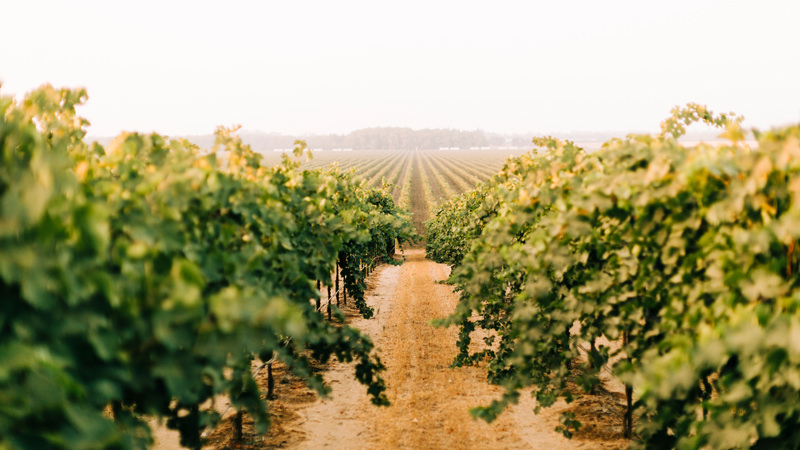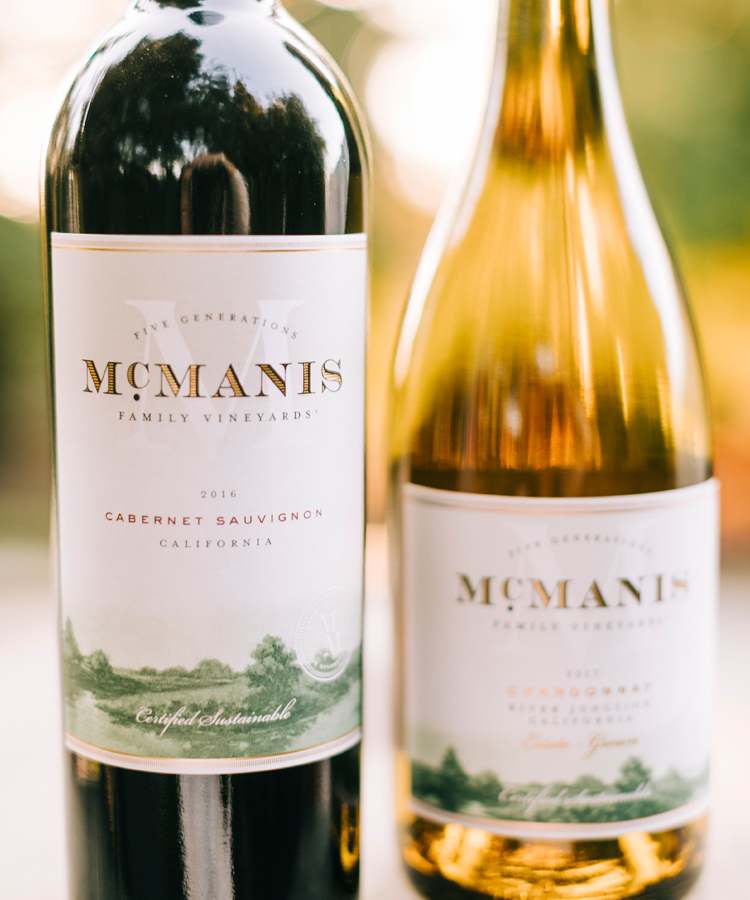
You’ve befriended your butcher, chatted Camembert and chèvre with your cheesemonger, and are on a first-name basis with your fishmonger. Now it’s time to get to know your winemaker. Specifically: McManis Family Vineyards, a team of fourth- and fifth-generation farmers who’ve been working the northern interior lands of California since 1938.
“We get to come to work everyday and see our family, which is probably the best part,” Tanya McManis, McManis Family Vineyards office administrator, says. That, and the fact that the McManis team is currently producing some of California’s best Cabernet Sauvignon and Chardonnay.
Here are five more things to learn about McManis Family Vineyards.
Keeping Up With the McManises
Move over, Kris: This is how you run a family business. After Ron McManis founded the winery in 1990 with his wife, Jamie, Ron recruited his son Justin and daughter Tanya’s husband, Dirk, to join the, er, show. With all hands on deck they built the winery in ‘98 and had their first vintage released in 2001. Someone get these folks their own TV show.
Water Works
Conservation is no joke in California, especially when it comes to H2O. While most wineries use an average of two to five gallons of water to produce just one gallon of wine, McManis has it down to 0.6 gallons. All 11 varietals are Lodi Rules-certified, too, meeting some of the toughest viticulture standards in California. “Our sustainability practices constantly push us to improve ourselves as wine grape growers and vintners. When you are able to grow the best-quality grapes, you are able to produce a better-quality wine,” Dirk Heuvel, vineyard manager, says. In addition to water conservation, you’ll find a comprehensive recycling program, energy-reducing lighting and clean energy-producing solar panels around the property.
Green Acres
Ever been to the PDX airport? You know, the one with the cool carpet everyone Instagrams? Well imagine the entire area covered in grapevines as far as the eye can see. That’s 2,700 acres, not far off from the 3,600 acres of land the family owns, which allows the team to create estate-grown wines that don’t cost an arm and a leg. “It is important for us to source fruit from our own vineyards to maintain the quality of the grapes every year,” Heuvel says. “When we have complete control over it, we can make the decisions needed to produce the best wine possible. Consistency vintage to vintage is one of the attributes we pride ourselves on.”

A Grand Junction
Lodi is one of the AVAs that the McManis family sources from, and it’s the name of the small town south of Sacramento. If it sounds familiar it’s for good reason: Creedence Clearwater Revival famously sang an eponymous song about Lodi. Just south of Lodi is the McManis family’s own “pot of gold”: the River Junction, which lies between the confluence of the Stanislaus and San Joaquin rivers. “The River Junction is a very, very special place to us,” Justin McManis, winemaker and winery operations manager, says. “You will not find another wine in the world that carries that appellation.” A veritable Nile of sorts, the river basin is consistently cooler than the surrounding lands, and made up of sandy loam soils, which are “ideally suited to growing premium Chardonnay, Pinot Noir, Pinot Grigio, and Viognier.” Or so we heard, ahem, through the grapevine.
Small but Mighty
When it comes to production, it’s all about using small-winery methods at McManis Family Vineyards. So what does that mean for you? McManis uses smaller tanks than the average facility, allowing each vineyard block to be kept separate so that the fruit can be evaluated for quality prior to blending. “Being able to take multiple inputs of Cabernet from different AVAs and microclimates … and use those inputs to experiment and decide which blend is the best offers a remarkably helpful amount of control when it comes to winemaking,” Justin says. “At the end of the day we are able to put quality, consistency, and value in the bottle.”
He’ll also be the first to admit their small size does have its challenges, too: “We all wear many different hats and have many different responsibilities,” he says. “Sometimes, there’s just not enough time in the day.” But at the end of the day, whenever that moment finally comes, one thing’s for sure: It’s all worth it.
This article is sponsored by McManis Family Vineyards.
